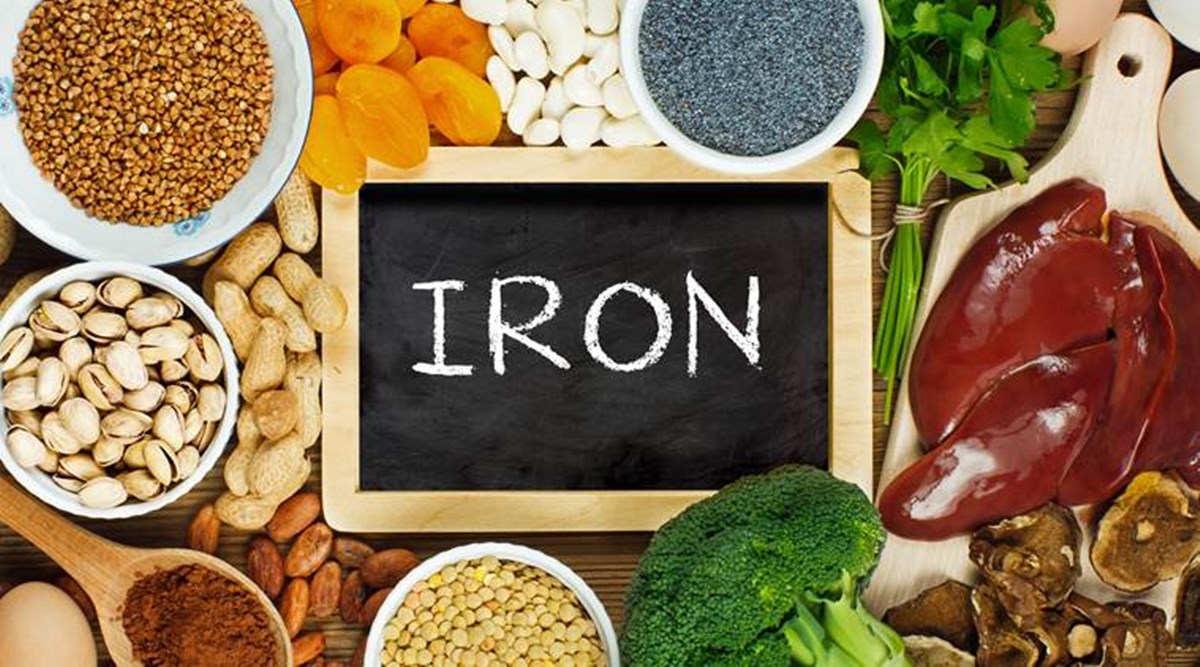 Iron deficiency commonly occurs during menstruation, pregnancy and early childhood. (file photo)
Iron deficiency commonly occurs during menstruation, pregnancy and early childhood. (file photo)Iron deficiency in the body can lead to abnormally low levels of red blood cells as iron is needed to make haemoglobin, a protein in red blood cells. Without enough haemoglobin, the tissues and muscles are unable to get the required amount of oxygen and work effectively, leading to anaemia.
Food Safety and Standards Authority (FSSAI) recently suggested some useful tips to prevent iron deficiency in the body, as part of Poshan Maah 2020. “Iron deficiency most commonly occurs during – menstruation, pregnancy and early childhood,” the organisation wrote on Twitter.
How to avoid iron deficiency
Here are some tips that FSSAI suggested:
* Prepare meals using iron-fortified staples
* Avoid consuming tea and coffee with meals
* Eating plenty of iron-rich fruits and vegetables
* Consuming vitamin C-rich foods with meals for better absorption of iron
Iron deficiency most commonly occurs during – mensuration, pregnancy & early childhood. Follow these simples tips to avoid Iron deficiency! #PoshanMaah2020 #PoshanAbhiyaan #HealthForAll @mygovindia @MIB_India @PIB_India @MoHFW_INDIA @POSHAN_Official pic.twitter.com/5d6vqYOMgE
— FSSAI (@fssaiindia) September 16, 2020
Symptoms of iron deficiency
Earlier, Union Health Minister Dr Harsh Vardhan had pointed out some symptoms of iron deficiency — tiredness, headache and dizziness, shortness of breath, heart palpitations, and hair fall. “Fight off the symptoms of Iron Deficiency Anemia (IDA) by consuming fortified staples like rice, wheat flour & double fortified salt, rich in iron,” he had advised.
Read| From iron to vitamin B12: Five common nutritional deficiencies among Indians
Iron-rich foods
Food has two types of iron — heme and non-heme iron, according to redcrossblood.org. Heme iron is found in meat, fish, poultry and is most readily absorbed by the body. Non-heme iron, on the other hand, is found in plant-based foods such as fruits, vegetables and nuts, but only two to 10 per cent of the iron consumed is absorbed. Foods rich in vitamin C can also help in the absorption of non-heme iron.
For more lifestyle news, follow us: Twitter: lifestyle_ie | Facebook: IE Lifestyle | Instagram: ie_lifestyle
📣 The Indian Express is now on Telegram. Click here to join our channel (@indianexpress) and stay updated with the latest headlines
For all the latest Lifestyle News, download Indian Express App.